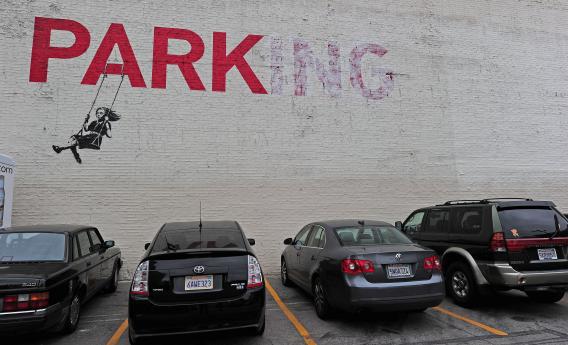Randal O’Toole’s hatred of trains is well-known, but I was a bit surprised to read him specifically connect it to the coming rise of computer-piloted cars.
Obviously any major new breakthrough in transportation technology is going degrade the value of a lot of existing infrastructure. But I have a hard time seeing intra-city rail transit being the major case here. After all, rail already suffered mightily at the invention of the conventional automobile. Where you see successful rail transit in place, it’s normally because the corridor is simply too dense to move people in cars. The streets of Washington, D.C. just couldn’t acccommodate all the people who now ride the Blue/Orange line through downtown, nor could Manhattan accommodate the passengers on the 4/5/6 trains. Automomous vehicles might impact this calculus at the margin, but it doesn’t seem like a game-changer.
By contrast, right now every metropolitan area in the United States contains many, many more parking spaces than automobiles. When you’re at work, the space allocated for your vehicle at home sits there empty. When you’re at home, the space allocated for your vehicle at the office sits empty. Malls build parking to accommodate demand during peak hours, and the spaces mostly sit empty off-peak. But if the cars could drive around without a human pilot, there’d be no need for such lavish supplies of vehicle storage. In principle, a metro area could get by with fewer than one parking space per car since even at minimum-demand times a nonzero quantity of vehicles would be in use. That’s probably extreme, but right now depending on how you count we have somewhere between three and eight parking spaces per car. If the cars don’t need to sit idly waiting for you until you want to leave (imagine a world of cheap, ubiquitous taxis) that number is going to become totally ridiculous. After exploding for about 60 years, the torrent of parking construction is going to halt very suddenly and then start shifting into reverse. That should even make some rail lines more useful. Commuter rail stations, for example, will no longer need to choose between park-and-ride and transit-oriented development models. Every station will be a little TOD neighborhood, and people from further away will get dropped off and picked up at the station without needing to worry about storing a car there.
